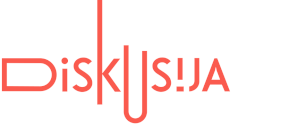The origins of Latvian as well as its Baltic counterpart Lithuanian and their early development are still disputed.
Some linguists tend to think of the existence of a Balto-Slavic language group that split in the 10th century BC into separate Baltic and Slavic groups. This notion is supported with examples of similarities between the Slavic and Baltic languages.
There are opposing views stating that similarities existing today are the result of close contact during several periods of history between Baltic and Slavic language speakers. Linguists supporting this view argue that there are a number of Baltic words which are similar to Sanskrit or Latin and do not have analogies in Slavic.
It is believed that Latvian and Lithuanian existed as two dialects of a single language before 800 AD. At that time, Latvian began to emerge as a distinct language.
The oldest known examples of written Latvian date from the 16th century and were religious texts translated from German to Latvian in order to help priests to work with Latvian people. Gothic script was used for writing in old Latvian.
Latvian was heavily influenced by German because of several centuries of rule by German crusaders and a mainly Baltic-German upper class. In the middle of the 19th century, a Latvian national awakening began along with a purification of the language.
However, in the 1880s, Russification started when Russian czar Alexander III came to power. There were suggestions to adopt the Cyrillic alphabet for written Latvian. After his death at the turn of the 20th century, the Latvian national movement re-emerged.
In 1908, the modern Latvian alphabet was developed and until 1930 this gradually replaced the old orthography created in 1631 by a German priest named Georgs Mancelis.
Latvia declared independence in 1917 and, after finally pushing out Red Army troops in 1920, declared Latvian as the official language.
In 1940, Latvia was occupied by the Soviet Union and the Russification policy had a big effect on the Latvian language. Many ethnic Latvians were deported and massive immigration of Russian speaking people began. As a result, Latvian is the mother tongue of no more than 60 per cent of Latvia’s population.
After the re-establishment of independence in 1991, the government introduced a new policy of language education to integrate all inhabitants into the environment of the official state language.





